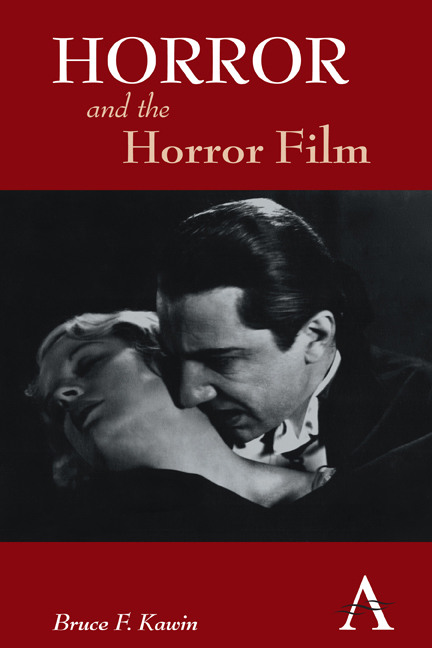Book contents
- Frontmatter
- Dedication
- Contents
- Preface
- List of Figures
- Part I Approaching the Genre
- 1 Horror
- 2 The Monster at the Bedroom Window
- 3 Fear in a Frame
- Part II Subgenres: The Book of Monsters
- 4 Monsters
- 5 Supernatural Monsters
- 6 Humans
- Part III Related Genres
- 7 Horror Comedy
- 8 Horror Documentary
- Notes
- Films Cited
- Selected Bibliography
- Index
- Frontmatter
- Dedication
- Contents
- Preface
- List of Figures
- Part I Approaching the Genre
- 1 Horror
- 2 The Monster at the Bedroom Window
- 3 Fear in a Frame
- Part II Subgenres: The Book of Monsters
- 4 Monsters
- 5 Supernatural Monsters
- 6 Humans
- Part III Related Genres
- 7 Horror Comedy
- 8 Horror Documentary
- Notes
- Films Cited
- Selected Bibliography
- Index
Summary
Monsters gather, concentrate and express horror as if they were focusing it.
What we ordinarily call a monster does not depend on the supernatural to exist. It is a dangerous and repulsive creature, perhaps deformed, perhaps gigantic, perhaps composed of the parts of different animals or plants, an aberration, not human or no longer simply human, a thing. The monster is physical, not metaphysical, and it can die. Often it requires unusual conditions for its creation or intrusion, and just as often it can be destroyed only in a special way. But it must be destroyed. As Ludwig Frankenstein (Sir Cedric Hardwicke) says of the Monster in The Ghost of Frankenstein (Erle C. Kenton, 1942, US), uttering what could be the motto of all monster movies, “While it lives, no one is safe.” When the monster has been killed, the typical monster movie is over. It is the cause of the problems that motivate the plot, even if sometimes it may also stand for other threats, as Godzilla is both a gigantic monster and an image of the dangers of radiation, war and nuclear testing.
A monster's destructiveness and repulsiveness may be a matter of its physical form. We fear a monster because of its awful appearance and its power, and because of the terrible things it can do to us or to those with whom we identify or sympathize. It is dreadful to look upon. It could eat us or step on us or tear us apart or imitate us, for there are many kinds of monsters, from pods to giant ants. In this chapter we will consider gigantic creatures as well as tiny ones, transforming and composite monsters, rocks, animals, plants, parasites, body parts, creatures from deep in the earth or under the sea, both versions of the Thing and many others.
Transforming Monsters: Dr. Jekyll and Mr. Hyde and The Thing
Although supernatural transformations are better known (such as of an immortal count into a bat), there are numerous films in which a person transforms into another being, or phase of being, without the involvement of any supernatural agency. In Sssssss (Bernard Kowalski, 1973, US) a mad doctor administers a serum to his assistant, who gradually turns into a cobra-man (a composite monster) and then into a cobra.
- Type
- Chapter
- Information
- Horror and the Horror Film , pp. 50 - 90Publisher: Anthem PressPrint publication year: 2012



